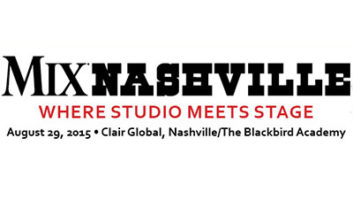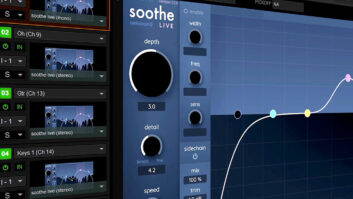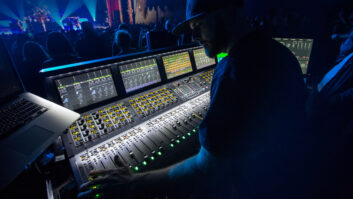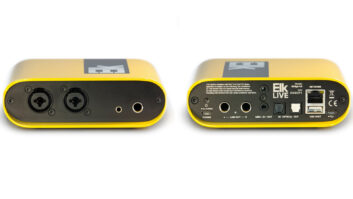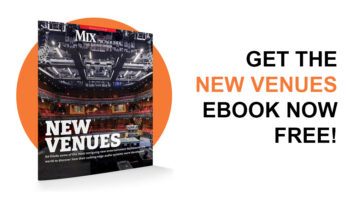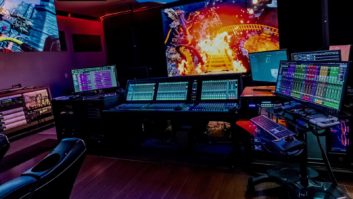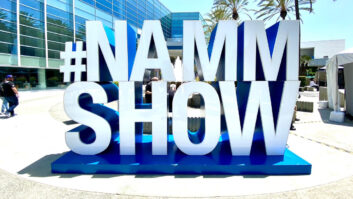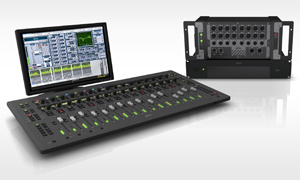
The year isn’t yet half over, and Avid has announced a second significant product line upgrade, this one in live sound. On the heels of April’s Pro Tools 11 launch, which brought 64-bit computing and massive upgrades in speed to the DAW juggernaut, the company is now introducing a radical new networked system for live sound, the S3L. It’s the first real system upgrade from Avid’s live side in years, and it truly is a system upgrade, representing a new way of working.
It’s modular, compact, scalable, forward/backward-compatible and all the other adjectives you would expect, but perhaps most notable, it adopts the Ethernet-based, open AVB networking standard, which allows direct connection to Pro Tools (Version 11 comes with the purchase, as does Venue software) and any number of distributed devices. It also incorporates Avid’s Eucon protocol, allowing for work with any number of DAWs from various manufacturers
That decision to go with AVB, rather than competing proprietary network protocols, was a critical early decision in the products three-year development, said Avid’s Sheldon Radford, senior product manager of live systems and consoles, at a press briefing in mid-May. It was based first on the open and standardized nature of AVB, he said, and it was adopted with a look toward the future of the company’s integrated platforms. Each of the three devices in the system has I/O; the direct integration with Pro Tools takes it beyond simply a fixed live system and enters a new level of control for both live and studio tracks.
There will be no shortage of technical details available at any number of pro audio sites starting today, and you can click here to see the official Avid specs. While the low price (starting at $18k for a 16-channel configuration) and technical details are impressive, with a DSP-based engine said to be twice as powerful as the SC48, those numbers are to be expected from a market leader. It’s the overall system approach, and the amount of connectivity, that makes this a true new approach for Avid.
The S3L, which will be officially shown at InfoComm in June and is expected to ship in July, comprises three main hardware components to go with the Pro Tools (and AAX plug-ins), Venue and VenueLink software.
S3 Control Surface
The 16-fader control surface is slim, modern-looking and lightweight. At 14 pounds, it can easily be unplugged at the end of a gig and brought up to the hotel room to be used as a Pro Tools controller by night. There are 10-segment meters, four analog inputs (2 XLR mic/line, 2 TRS line), four analog outs (2 XLR line, 2 TRS line), two Gigabit Ethernet AVB ports and two USB 2 ports.
E3 Engine
The two-rackspace, HDX-powered, floating-point DSP-based engine represents the real breakthrough. It contains 64-input channels with full processing; onboard 4-band parametric EQ on every input and output channel; 24 aux buses (LCR, plus 8 mono matrices and 8 VCAs); onboard dynamics; 32-bit floating point processing; plug-in support based on AAX DSP; and direct Pro Tools support with no interface required. Avid AAX plug-ins, including Channel Strip, Mod Delay, the Pultec bundle, ReVibe and others, are included.
Inputs/outputs include 4 XLR mic line analog inputs and 4 XLR line outs; 4 channels of AES3; GPIO (2-in/2-out) and word clock in/out; 3 Gigabit Ethernet AVB ports; one ECX Ethernet port for wireless remote control; one DVI video port; and four USB 2 ports.
Stage 16 I/O Box
The basic system 4-rackspace unit comes with 16 XLR mic inputs with preamps and 8 XLR outs, along with 4 channels of AES3 input/output. There are also 2 Gigabit Ethernet AVB ports, with the ability to daisy-chain up to four Stage 16 boxes. Connection is via shielded 350 MHz Cat5e or better (Neutrik etherCON connectors required), with a run of up to 100 meters.
You will be reading a lot more about the S3L in the months to come, as Avid makes its push into the mid-size, system-based live sound touring/install/rental market. At a price point of roughly $18k to $28k, depending on channel count, Avid made a decision not to go head to head with PreSonus, Behringer and the like in the truly low-cost sweepstakes. Instead, the competition comes from products such as the Yamaha CL1, DiGiCo SD9 and Midas Pro 2C. It’s a wide-open market, and with Avid’s new system-based approach, you can count on a big splash.
Find more information and specifications for the Avid S3L System.
